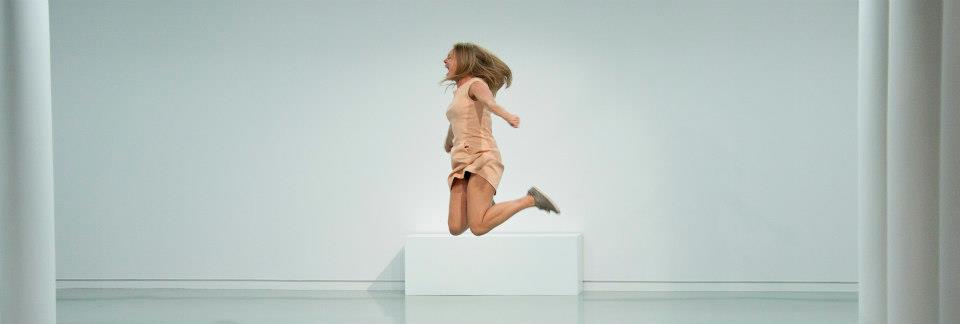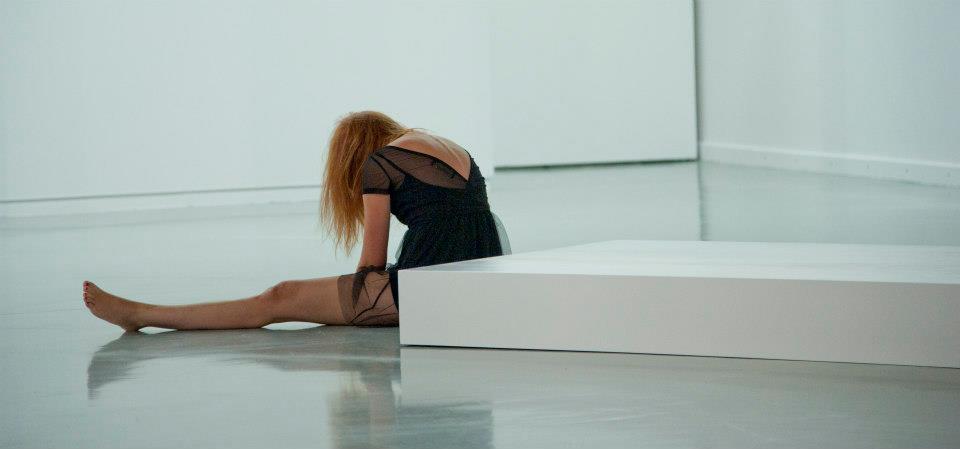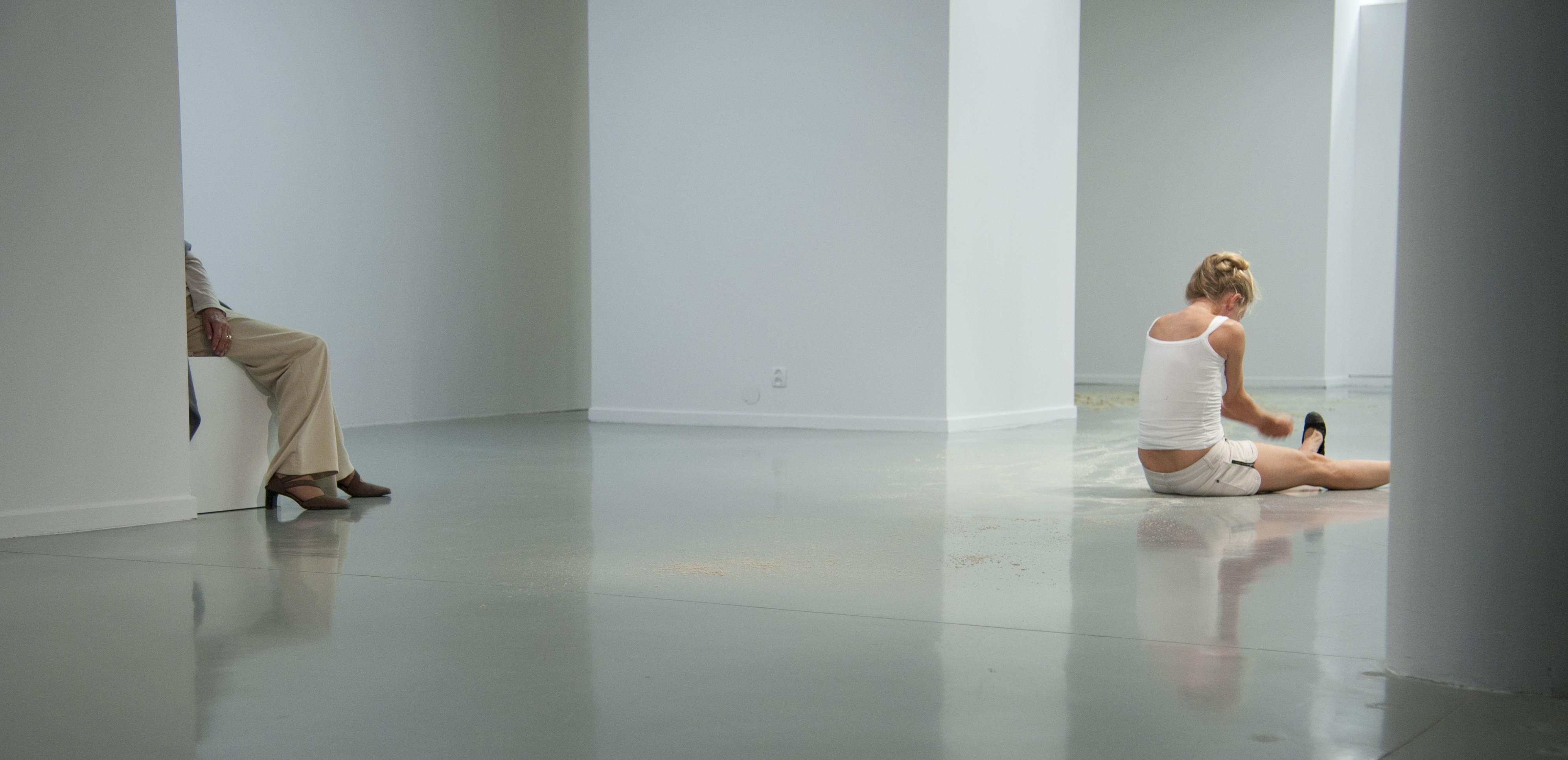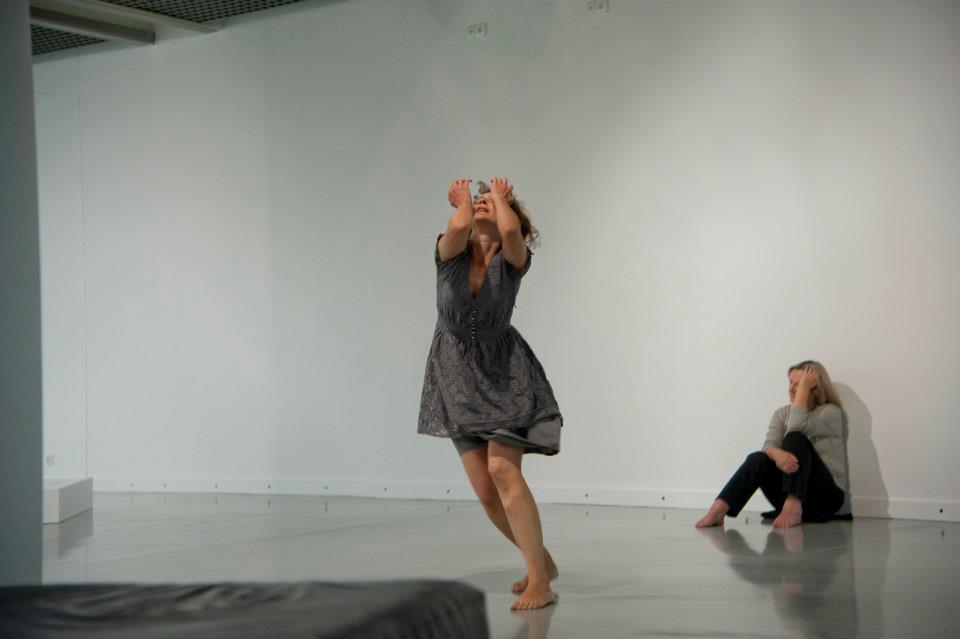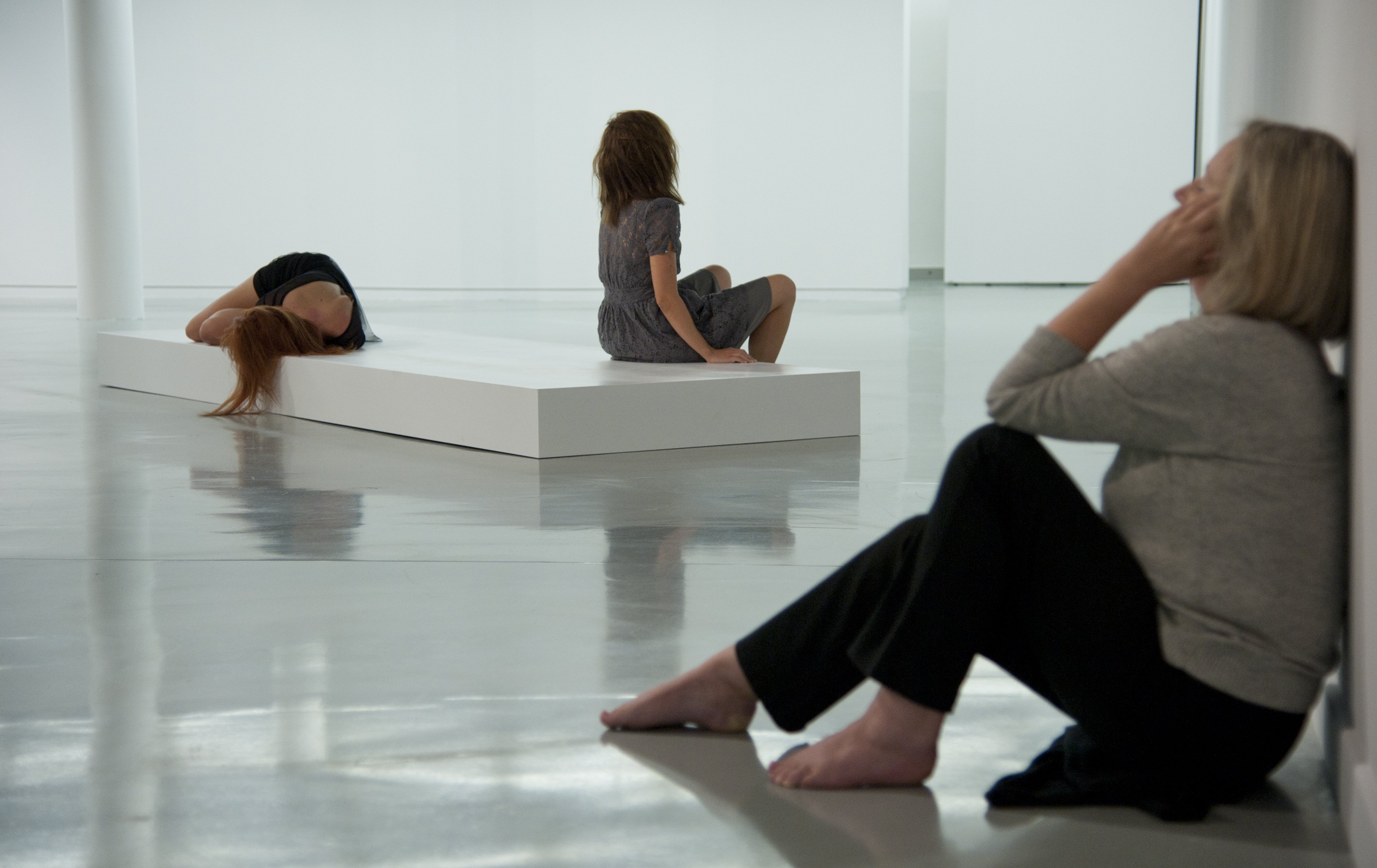Zofia Cielątkowska
Madness and Holiness
For centuries, women have occupied a unique place in the annals of insanity. Women outnumber men in diagnoses of madness, from the “hysteria” of the eighteenth and nineteenth centuries, to “neurotic” and mood disorders in the twentieth and twenty-first. … Why is this so? Some would say that women are more mad than men, with psychiatric treatment a beneficent force that sets out to cure the disordered female mind. I proffer an alternative explanation – that women are subject to misdiagnosis and mistreatment by experts whose own pecuniary interests can be questioned, as can their use (or abuse) of power.[1]
Jane M. Ussher, The Madness of Women
Mental illness is not a disease, whose nature is being elucidated by science; it is rather a myth, fabricated by psychiatrists for reasons of professional advancement and endorsed by society because it sanctions easy solutions for problem people.[2]
Roy Porter, Madness. A Brief History
Katie Mitchell’s video installation Five Truths[3] depicts the scene of Ophelia’s madness and death through five projections that correspond to the directing styles and methods of Stanisławski, Brecht, Brook, Artaud, and Grotowski. The same actress appears five times amidst a minimalist stage design, yet in each case her manner of acting, execution and concept of the role are different. Each take lasts for 10 minutes. As we watch these varying versions of the action, directing, methods and concepts of theatre, it is difficult to resist the impression that we are looking primarily at an image. After all, the decision to show theatre nuances in the form of a projection, and not, for instance, through a live spectacle, influences in a more or less intentional way the different approaches to camera work, selection of frames as well as elements of manipulation at the technological level. Therefore, in each case we see a different composition and fragments that flirt with iconic painterly representations of the protagonist.[4] The longer we look at the productions, the more the character of Ophelia disappears, while a selective history of theatre directing comes to the fore – especially with regard to the involved differences.
Zorka Wollny’s project Ophelias – Iconography of Madness[5] builds on a similar idea. The artist confronts versions of Ophelia created by different directors on Polish theatre stages in the past[6] in order to demonstrate the image of women’s madness. Twelve actresses who have previously played the eponymous role once again appear on the “stage”. On the basis of different renditions of the spectacle as well as their own memory and recollections, each of them delivers the Shakespearean lines. We therefore witness the actions of twelve mad Ophelias and, at the same time, twelve different directing concepts. As the artist herself describes her work on the project: “In each case the monologue was prepared individually not only on the basis of the final scene of madness, but also the preceding scenes that feature Ophelia. Preparations to the spectacle also embraced individual meetings and rehearsals, working in the actual space – planning the choreography in relation to architecture as well as the final combination of particular scenes during group rehearsals.” As we look at the repetitive monologue – acted out live with a clear focus on the corporeality of the actresses (or performers) and “merged” into a single spectacle – we do not see an image. The action that develops in the course of time in a non-theatrical space of a white cube (or a park) compels a question about the role and meaning of dramaturgy, time, set design, place and text. In the aforementioned work by Katie Mitchel, given the chosen format and manner of presentation, the same question did not appear problematic.
This essay begins with a juxtaposition of these two projects as the choice of different forms of presentation weighs significantly on their reception and interpretation. Wollny’s work revolves around the motif of madness – women’s madness. That is why the present text explores this phenomenon through the seemingly far-removed prism of madness and holiness, particularly with regard to “holy fools,” and demonstrates different constructions of femininity and masculinity related to these concepts as well as their links with performance.[7]
Beyond the norm: Otherness as a mirror
Akin to holiness, madness is situated amongst the practices or within the phenomenon of “otherness,” yet, at the same time, it still belongs to the sphere of a given community or group. It is this peculiar status on the margins of the society, but also within the society, that turns madness, similarly to holiness, into a mirror that reflects a given social order, principles and more or less overt moral and customary norms. Such reflection is pursued in one of the major analyses that tackle the question of madness or rather use madness as a prism to analyse social norms, cultural constructs and the power of knowledge and discourse – Madness and Civilization: A History of Insanity in the Age of Reason. Yet, by way of an introduction, I will highlight a motif that appears in a different text by Foucault – the lectures at the Collège de France from 1984[8] – which bears relation to reflection on performance. I am referring to remarks concerning the Cynics, who – against classic i.e. theoretical philosophical disquisitions – granted superiority to practice, action and the form adopted by that action. The documents of Cynics were not texts or treatises, but gestures – stories about ways of life and patterns of behaviour. Foucault sees Cynicism as the shattered mirror of ancient philosophy, in which all philosophers could and had to recognise themselves.[9] Foucault appears here mainly because it is difficult to imagine a discussion of madness without mentioning his contribution to the topic. The same pertains to Bridget Gellert Lyons, the author of a study devoted to the iconography of Ophelia, who frames her primarily as a passive character, but also highlights the unclear symbolism of flowers, which play an important role in the scene of madness.[10] Yet, the present text revolves principally around reflection on madness, otherness and gender perspective. A publication that masterfully combines these tropes is Marla Carlson’s Performing Bodies in Pain. Medieval and Post-Modern Martyrs, Mystics, and Artists. Since our discussion focusses on the iconography of madness, let us begin with the image.
Women – holiness, pain and performance
A painting by Jean Fouquet (painted ca 1452–1460) depicts the suffering of Saint Apollonia. Lying down, the saint is bound to a wooden plank. A man is pulling her hair, while another man is removing her teeth with pincers almost as long as her own body. Marla Carlson comments on the image as follows: “Two of her tormentors look at her, but the other two turn their gaze outward, inviting the vicarious participation of spectators distributed according to their engagement with the spectacle: seated on and under the scaffolds, even climbing a pole to get a better view.”[11] The author also remarks upon a gender-based division of roles in the painting. Pain appears here as an alternative way for women to speak. In the cultural-social discourse of the epoch (and actually also today) women were supposed to stay mute, and if they ever spoke, such instances were reduced to specific limited situations – usually in a non-public realm. In this sense, Apollonia’s female body finds itself in an ambiguous situation. On the one hand, it communicates what believers and the authorities themselves would wish to see in it – a body locked in spirituality, i.e. the lack of a bodily physical body, whereas on the other hand – it locates the woman at the centre of attention as the subject of suffering. For the latter reason – such a situation being out of sync with the realm of social relations shaped by male hierarchy – in the 14th and 15th century the Church strove to keep women saints and mystics away from public awareness. It is also noteworthy that in the dominant historical narrative, so aptly described by Foucault, the porous border between holiness (a kind of authority) and madness (cultural synonym of humiliation, ridiculousness and stupidity) became the reason why madness was usually associated with women. Further, a factor that played an important role in this division was sexuality and corporeality. More on this in a moment. The representation of Apollonia in the medieval miniature painting reveals the tension between ascetic withdrawal and mystical ecstasy; the tension that often makes itself manifest in the case of saintly women (as well as mad women). As Carlson rightly points out, thus drawing a line between the context of the medieval suffering of women and performance, both for female body artists and for mystics pain was a source of empowerment and offered a guarantee of authenticity.[12]
It is worth elaborating on the parallel drawn between the suffering of the body of performers as well as mystics and saints. One of the basic principles followed by Amelia Jones with regard to body art, especially performance, is that it opens up the possibility of radical engagement (of the viewer), which compels a change in thinking about meaning and subjectivity – both of the artist and the person who experiences or studies a given action. For this reason, according to Jones, it is difficult to adopt a neutral historical or critical position to any work of body art, and especially performance art. Inherent in body art itself is the possibility of destabilisation. Therefore, insofar as in performance (particularly in its early days) the body acquires a subjective status with favourable social-cultural transformations, in medieval examples it is definitely the spiritual dimension of the body that prevailed and could be countered by pain to a certain extent. Later, it also became the case in performance.
As the conventional object of art rather than its creative subject, women found new opportunities for expression in the first wave of conceptual art performances in the 1970s. Systematically ignored, trivialized, and silenced, female artists sought to develop a new language of the body – often enough, the body in pain.[13]
If we look especially at the Middle Ages, but also at Late Antiquity, we need to note that the majority of saints are men, mainly ascetics and flagellants who mortified their own flesh. The popularity of such practices gradually increased between the 5th and the 15th century. The rise of women’s participation in ascetic practices occurs between the 13th and the 14th century. It was also then – as compared to the earlier epochs – that many more women mystics emerged.[14] The representations of martyrs, both in prints and in texts, pose a certain theoretical problem highlighted by Jacqueline Murray. Literary texts (the main source of information about sufferers) in particular betray a tendency to distance themselves from the real body, focussing instead on “text as the body and text as bodies.” Text simply becomes yet another layer of representation. Yet, it is not only literariness or literature that poses this problem. An analysis of sexuality in Late Antiquity and in the Middle Ages shows that only women had bodies and gender. As Murray states: in the Middle Ages “women had specific, sexed, marked bodies, whereas men had human bodies.”[15]
Medieval texts were obviously written mainly by men. Theologians in their works seemed to be fascinated by women’s bodies – their reproductive potential, lactation, childbirth, the taboo of menstruation blood and the related ritual chastity as well as special prohibitions imposed on women’s bodies in order to prevent them from sullying sacred places. Even if their interest had an objectifying character and deemed woman an inferior being (which is actually not that different from modern-day debates on abortion), from the formal point of view the male body did not attract such a great interest when seen in the context of sexuality. Masculinity adopted the form of a negative identity – it became founded on alienation. I mention these seemingly distant analyses since the tension between holiness, madness and sexuality is particularly manifest in Ophelia’s behaviour, and especially in her painterly and moving image[16] representations. Yet, as far as male madness is concerned, the situation is completely different.
Mad saints, mad harlots
A phenomenon that has garnered little analytical attention in culture are the so-called holy fools, which confirms all the more the gender-based division of roles and, additionally, provides an interesting contribution to reflection on performance. Insofar as Symeon Stylites definitely made a landmark in contemporary culture,[17] Symeon the Holy Fool[18] probably did not become as famous. Still, his behaviour seems to provide an ideal basis for an entertaining, perhaps slightly surrealistic, film.
Having spent 29 years in the desert, Symeon sets out on a journey and reaches Edessa, where he resolves to become a fool for the sake of piousness and servitude to God.[19] He enters the town dragging behind him a dead dog tied by the paw. He arrives at the temple on Sunday with a handful of nuts, and when liturgy begins, he blows out the candles and begins to throw the nuts around. When others attempt to catch him, he enters the ambo and continues to throw the nuts at women. Finally, on his way out, he overturns the tables of the pastry chefs – the latter gesture probably in reference to Jesus expelling merchants out of the temple.[20] Texts about Symeon include numerous fragments devoted to the holiness of the physical body, yet the same fragments also criticise corporeality as such. All worldly desires and pleasures are viewed with disdain, and if for some reason a need emerges to represent bodily processes at all, it entails a breach of the social order – the motif related to sexuality is noteworthy for that matter. The author of the account of the saint’s life notes an episode when a naked Symeon traverses the town on his way to the baths, where he does not enter the male bath as he should, but the female one – “in the presence of Lord’s glory,” as the author adds. In another story, when an overwhelming urge[21] haunts Symeon in the desert, he asks God and father Nikon to lift him above unchastity.[22] When a respectable man sees him in the company of prostitutes, he wants to throw a stone at him, but does not make it in time as Symeon approaches and punches him first, after which he takes off his clothes and begins a nude dance, whistling and claiming there is no deceiver around. The stories of Symeon usually highlight his holiness, meagre physique and references to God.
As Sergey A. Ivanov writes in his book Holy Fools in Byzantium and Beyond,[23] the eponymous term refers to a person who simulates madness and stupidity or provokes and shocks others by deliberately breaking the rules.[24] The author immediately explains that it obviously does not refer to all instances of such behaviour, but only to those in which the observers realise that they are underpinned by holiness or morality. The vast majority of texts that analyse the phenomenon of holy fools emerge from the field of religious studies, although there have also been attempts to analyse the motif from a broader cultural perspective – through the prism of such tropes as psychiatry, shamanism, carnival, the figure of a clown or jester. The Orthodox Church maintains that the holy fool method allows one to conceal their perfection and holiness, and thus to avoid worldly praise.[25] Often aggressive, the behaviour of a holy fool frequently stirs up scandal both in the contemporary meaning of the word – causing shock – and in the specifically moral sense.[26] There are of course distinctive links between Cynics and holy fools at the formal level.[27] The latter phenomenon began to gradually disappear, but it received a new lease of life from the stylites.[28]
Teatricality and image
Seen from the point of view of theatre or directing, every analysis and narrative concerning Ophelia is at the same time an analysis and narrative concerning Hamlet – if only for the reason that it evokes an absence or lack – and situates itself within a broader reflection on theatre and culture in general. As Katarzyna Czeczot rightly remarks, Feminist scholars point out that the play itself is less sexist than its theatre or critical interpretations. In this sense, the cultural role or image of Ophelia is also the outcome of manipulations that stem, for instance, from the tradition of theatre staging that compels the female protagonist to leave the stage before the “To be or not to be” monologue, a suggestion that is completely absent from the original. Quite the opposite, the final lines of the famous soliloquy contain a direct address to the beautiful Ophelia.[29] Inherited and often tacitly handed down further, the discussed tradition of madness, holiness and morality as well as specific canons for women and men to follow have certainly influenced such interpretations. So what does Wollny really show? The isolation of Ophelia’s scene in a problematic space that is definitely not intended for live actions and the deliberate repetitions of the monologue turn the text into a formal addition rather than the principal reference point. Given all these elements and the dismembered dramaturgy, the motif that connects the individual Ophelias as well as holds the entire spectacle together is corporeality and the focus on the body and gesture – sometimes subtle and minimal, and sometimes aggressive and loud. And perhaps – slightly against the title – no image or iconography is actually involved; or at least not in the sense of capturing the image of “madness.” The point is rather to deconstruct it. The work has been inspired by such spectacles as Lucia Mad (on the basis of the play by Don Nigro, directed by Tomasz Wysocki at the Juliusz Słowacki Theatre in Cracow, 2007;) and Lulu (on the basis of the play by Frank Wedekind, directed by Michał Borczuch, Stary Theatre in Cracow, 2008), which are essentially theatre projects, but also spectacles devoted primarily to women – not about women, but about the systems, principles and norms that concern women. A similar move can be seen in Ophelias, although theatre and theatricality provide the frame, rather than the essence. Choreographic preparations in the space of the spectacle (Muzeum Sztuki in Łódź) took the artist just slightly longer than two days. The order of monologues and dramaturgy had been created before. This will probably raise eyebrows of any director who is reading this text. As Wollny admits:
This unusual manner of directing was made possible by my artistic experience derived from visual arts. I was composing a collage, a mosaic-like composition of figures and texts; I was distributing the accents having a 300-metre empty museum hall in front of my eyes. The claim that the outcome is a theatre found footage is fully justified. Therefore, what emerged is primarily a work of art that adopts theatre and acting as its material.
Ophelias. Iconography of Madness is far from an easy work to watch. Despite its predictable structure and repetitions, it still requires intense concentration. There is also no “traditional” dramaturgy understood in the context of reflection on the duration of the spectacle – and this is where we reach the essence of the project. Creating the work required research concerning the number of actresses who have so far played the role of Ophelia in Poland and how many of them were still professionally active. Then came the search for those who might be interested in participating in the project, conversations with the chosen ones and invitations to the stage. To cut the long story short, the fundamental dramaturgy and duration are invisible to the viewer. Against the commonly spread slogans of performance studies and the links between visual arts and theatre, which are perfectly well documented in scholarly and artistic terms, it is in such very instances that some important differences come to the fore. Wollny does not create a spectacle. It is also difficult to say that she is the director. She also does not create a story about Ophelia. What she develops is rather a story about contemporary actresses – they are the focus of the project. Paradoxically enough, the actresses who play the role of Ophelia indeed play themselves (to avoid saying “perform” themselves). On a completely different basis than in the early days of performance, contemporariness changes the relations involved in the authentic and the real. The character of Ophelia is required here as a reference that abounds in traditions and meanings, owing to which both the image of madness and madness itself undergo deconstruction. Therefore, I interpret this work as a contribution to the story of madness (which is not madness at all), and above all – of women’s subjectivity. And I am waiting for a more extensive record of actresses’ stories, and not stories about actresses.
Dr Zofia Cielątkowska – Philosopher, curator and writer. Her writing and curatorial research focus on social contexts in visual arts, theatre and performance. Doctor of Humanities in Philosophy (2013), Graduate of Philosophy (2006) and Curatorial Studies (2008). She is currently researching on Afro-American female drama writers. More info: zofiace.wordpress.com
[1] Jane M. Ussher, The Madness of Women. Myth and Experience (London and New York: Routledge 2011 ), p. 1.
[2] Roy Porter, Madness. A Brief History (Oxford: Oxford University Press, 2003), p. 2.
[3] Katie Mitchell’s video installation Five Truths was exhibited at the Victoria and Albert Museum in London in 2011.
[4] This was also highlighted by The Guardian’s reviewer Matt Trueman: “Given the set-up, which looks like an art gallery, I found myself thinking of each practitioner in terms of painters. Mitchell offers a direct echo of Sir John Everett Millais’s famous painting Ophelia throughout, but it is most pronounced in the Brook. There are also shades of Francis Bacon and Kandinsky in the Artaud, of Van Gogh’s candid self-portraits in the Brecht and, in Grotowski, Picasso’s cubism.” Matt Trueman, “Five Truths brings new clarity to Ophelia’s demise,” The Guardian, 21 July 2011.
[5] This unique spectacle was staged four times: at Muzeum Sztuki in Łódź (2012), Wrocław Contemporary Museum (2013), and two times during the Gdańsk Shakespeare Festival (2013).
[6] For the record and given the importance of female characters and roles as well as the significance of the actresses for the discussed project, I enumerate the stagings of Hamlet in which the involved participants acted: Iwona Bielska (dir. Jerzy Krasowski, Juliusz Słowacki Theatre, Cracow, 1978); Monika Dąbrowska (dir. Jolanta Donejko and Piotr Borowski, Studium Teatralne, Warsaw, 2005); Ewa Domańska (dir. Jan Englert, Polish Television Theatre, 1985); Gabriela Frycz (dir. Waldemar Śmigasiewicz, Teatr Nowy, Poznań, 2007); Anna Ilczuk (dir. Monika Pęcikiewicz, Polski Theatre, Wrocław, 2008); Marta Kalmus-Jankowska (dir. Krzysztof Nazar, Coastal Theatre, Gdańsk, 1996; dir. Jan Klata, Coastal Theatre, Gdańsk, 2004); Elżbieta Karkoszka (dir. Jerzy Wróblewski, Teatr Rozmaitości, Cracow, 1967); Krystyna Łubieńska (dir. Andrzej Wajda, Coastal Theatre, Gdańsk, 1960); Karolina Porcari (dir. Radosław Rychcik, Stefan Żeromski Theatre, Kielce, 2011); Agnieszka Radzikowska (dir. Attila Keresztes, Stanisław Wyspiański Teatr Śląski, Katowice, 2012); Małgorzata Rudzka (dir. Andrzej Domalik, Dramatic Theatre, Warsaw, 1992); Bożena Stryjkówna (dir. Jan Machulski, Ochota Theatre, Warsaw, 1985).
[7] In this text I offer merely a very brief summary of this question. A more detailed discussion can be found in the chapter of my PhD Thesis devoted to this topic – Embodiment of the Subject: Philosophy and Performance within the Context of Contemporary Critique of Culture (2013).
[8] Foucault obviously did not write about it in the context of performance, but I am referring to the sheer way in which he treated Cynic philosophy, particularly with regard to its daily practices.
[9] Michel Foucault, Le Courage de la vérité. Le Gouvernement de soi et des autres II. Cours au Collège de France. 1984 (Paris: Seuil, 2008), p. 214.
[10] Bridget Gellert Lyons, “The Iconography of Ophelia,” English Literary History, 1977, vol. 44, no. 1.
[11] Marla Carlson, Performing Bodies in Pain. Medieval and Post-Modern Martyrs, Mystics, and Artists (New York: Palgrave Macmillan, 2010), p. 79.
[12] Ibid., p. 101.
[13] Marla Carlson, Performing Bodies in Pain…, p. 79. Marla Carlson’s text generally concentrates on pain – either real or pretended – and uses the prism of suffering to analyse various fields of performance. The experience of pain, which means both pain itself and the behaviour that accompanies it, becomes intertwined with an entire network of social relations.
[14] Marla Carlson, Performing Bodies in Pain…, p. 92.
[15] Jacqueline Murray, “’The law of sin that is in my members’: the problem of male embodiment,” in Gender and Holiness. Men, Women and Saints in Late Medieval Europe, ed. Samantha J.E. Riches, Sarah Salih (London and New York: Routledge, 2002), p. 9.
[16] Selected examples include: Eugène Delacroix, Death of Ophelia, 1843, Harris Brisbane Dick Fund; the role of Ophelia in Hamlet, dir. Grigorij Kozincew, 1964; Mary Hoare, Ophelia’s Death, ca 1781, Yale Center for British Art, Paul Mellon Collection; Caroline Watson, Ophelia, after Robert Edge Pine, 1784.
[17] For instance as part of Luis Buñuel’s trilogy from 1965 titled Simon of the Desert.
[18] Precisely: Symeon the Holy Fool of Edessa (522–588).
[19] Derek Krueger, Symeon the Holy Fool: Leontius’s Life and the Late Antique City (Berkeley: University of California Press, 1996). Pagination according to the online version UC Press E-Books Collection, 1982–2004: http://publishing.cdlib.org/ucpressebooks/view?docId=ft6k4007sx&brand=ucpress
The English text that I use – Life of Symeon the Fool by Leontius of Neapolis is based on a critical version of the Greek text by Lennart Ryden Léontios de Néapolis: Vie de Syméon le Fou et Vie de Jean de Chypre, edited by A. J. Festugière, from the series Bibliothèque archéologique et historique (Paris: Geuthner, 1974), p. 55–104.
[20] Ibid., p. 11.
[21] According to the footnotes to the text, it was probably a euphemistic reference to erection.
[22] Derek Krueger, Symeon the Holy Fool…, p. 15.
[23] Sergey A. Ivanov writes in his book Holy Fools in Byzantium and Beyond, trans. by Simon Franklin (Oxford: Oxford University Press, 2006).
[24] The English terms “holy folly”, “holy foolery” or “holy foolishness” do not fully convey the phenomenon in question, which Ivanov refers to in Russian as “iurodstvo”.
[25] However, there is a certain paradox to it because if a holy fool abandons his disguise, he loses his piety and holiness. That is why justified doubts emerge as to such behaviour in general because “if he [holy fool] has no intention of edifying anybody, then he could far more easily avoid worldly renown if he were to retreat to a place of solitude. Yet, he is drawn to company, to the very crowd whose devotion he ostensibly abhors.” Sergey A. Ivanov, Holy Fools in Byzantium…, p. 1-2.
[26] Ibid., p. 6.
[27] Generally, it can be said that the philosophy of Cynicism influenced early Christianity, as texts from that period testify. Ibid., p. 26.
[28] Ibid., s. 139.
[29] Katarzyna Czeczot, Ofelizm Romantyczne zawłaszczenia, feministyczne interwencje (Warsaw: IBL PAN, 2017).
